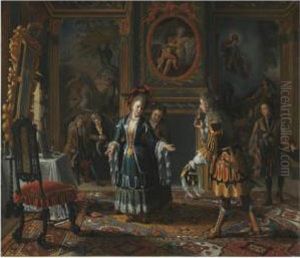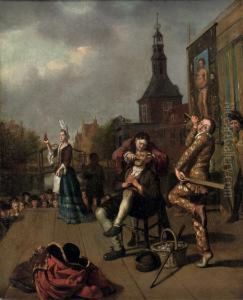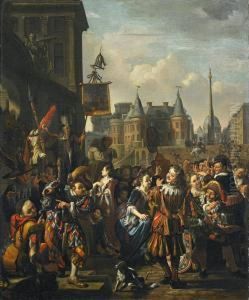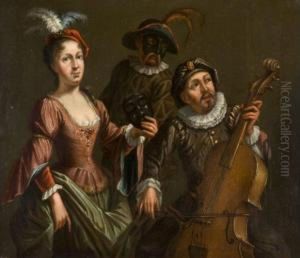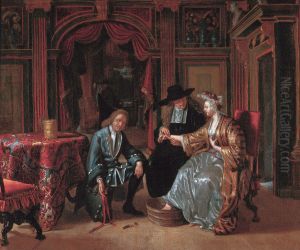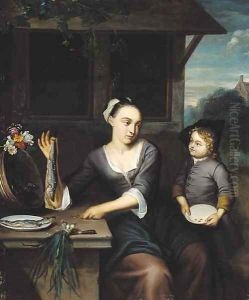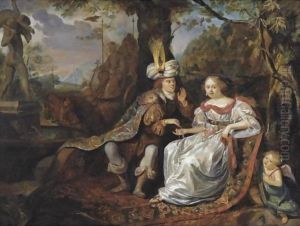Matthijs Naiveu Paintings
Matthijs Naiveu was a Dutch Golden Age painter known primarily for his genre scenes and portraits. Born in Leiden, the Netherlands, in 1647, he initially received his artistic training from Abraham Toorenvliet, a glass painter and drawing teacher. Naiveu later studied under the prominent Leiden painter Gerrit Dou, who was a pupil of Rembrandt. Under Dou's tutelage, Naiveu developed his skills in the detailed and precise style that characterized the Leiden School of painting.
Naiveu's works often depicted domestic interiors, festive occasions, and scenes of daily life, imbued with a sense of warmth and conviviality. He was skilled in the use of light and shadow, creating compositions that highlighted the textures and surfaces within his scenes. His paintings were well-composed, with attention to the narrative element of his subjects, which made them popular among the Dutch middle class.
In 1671, Naiveu became a member of the Leiden Guild of St. Luke, a professional association for painters. His reputation grew, and he was able to establish a successful career in Leiden. However, in pursuit of greater opportunities, Naiveu moved to Amsterdam in the late 1670s where he continued to work and receive commissions.
Throughout his career, Naiveu also painted religious subjects and occasionally ventured into historical painting. He was known to have produced several large-scale altar pieces for churches in the Netherlands. Despite the diversity of his subject matter, it is for his intimate genre scenes that Naiveu is best remembered today.
Naiveu's work reflects the broader trends of Dutch Golden Age painting, where there was a fascination with the details of everyday life and an emphasis on realism. His paintings are not only artistic achievements but also provide insights into the cultural and social dynamics of the period in which he lived.
Matthijs Naiveu continued to paint and contribute to the Dutch art scene until his death in Amsterdam in 1726. His legacy is preserved in the collections of various museums, including the Rijksmuseum in Amsterdam and the Louvre in Paris, where his works continue to be studied and appreciated for their historical and artistic value.




